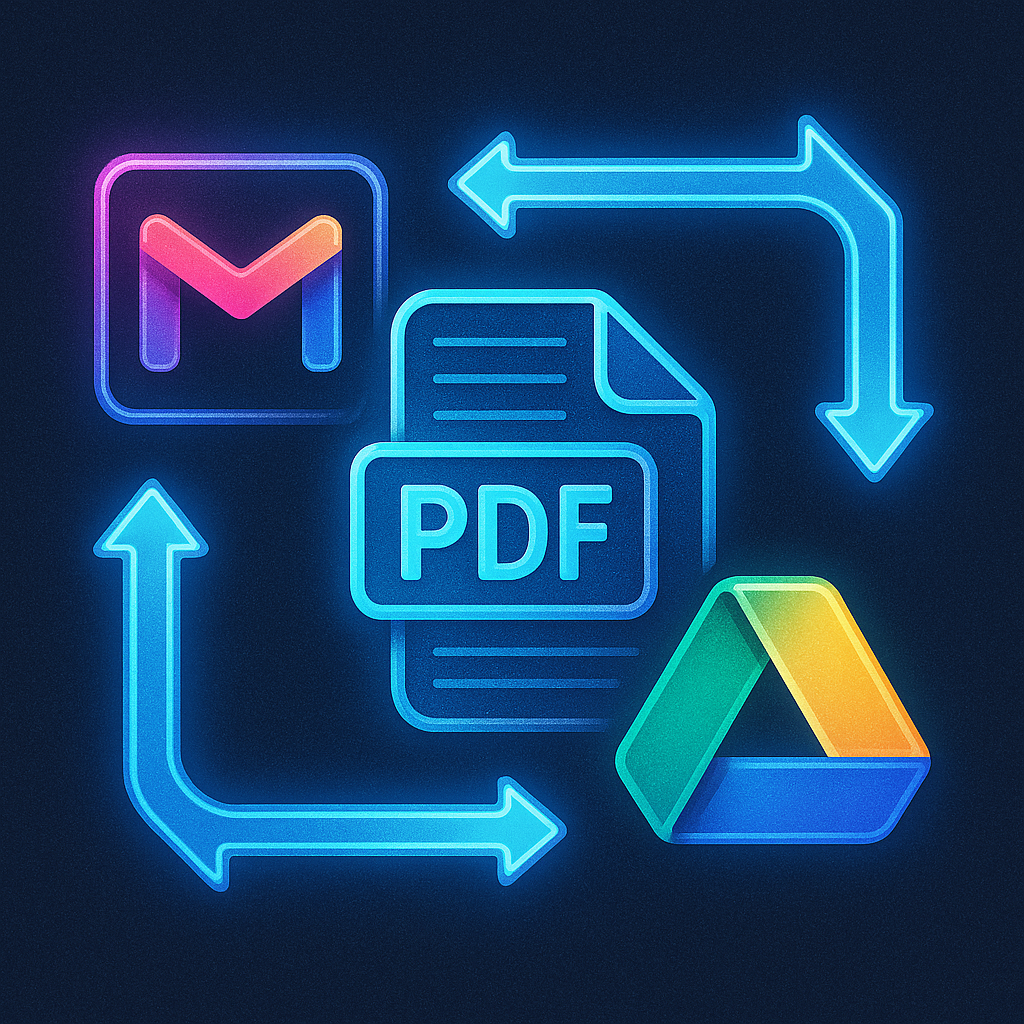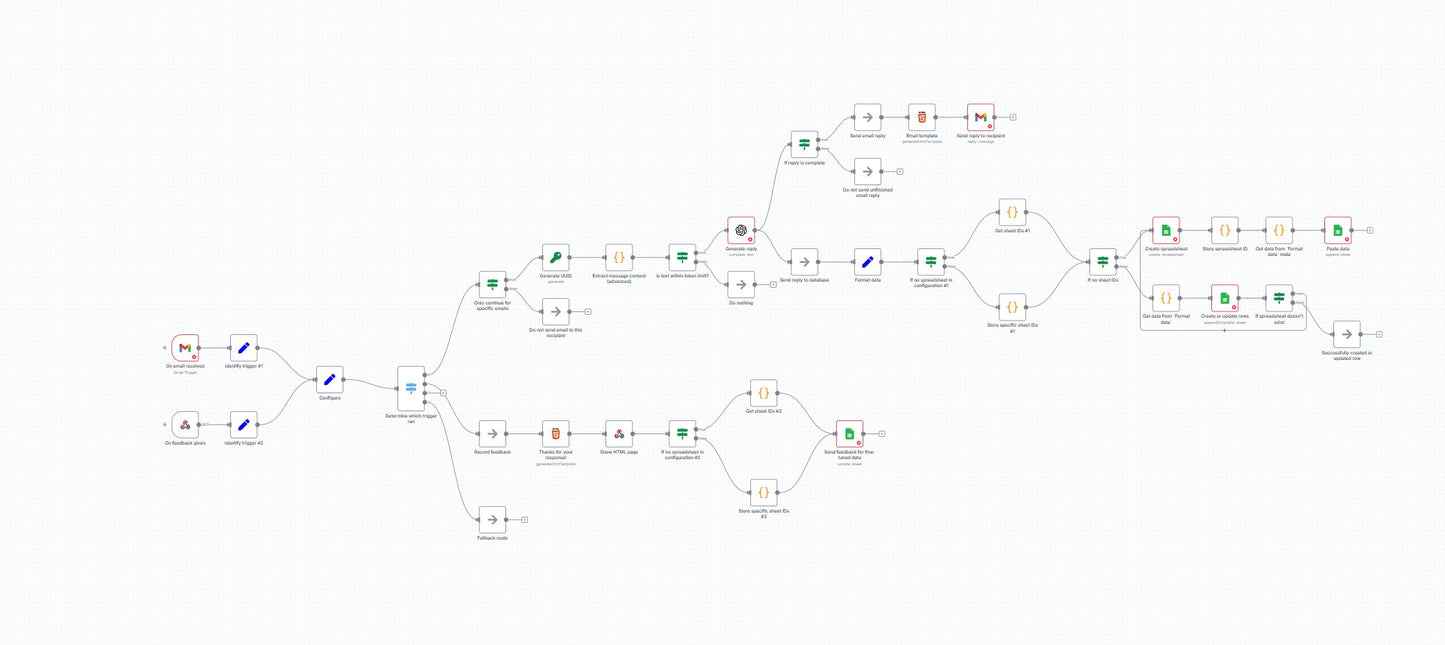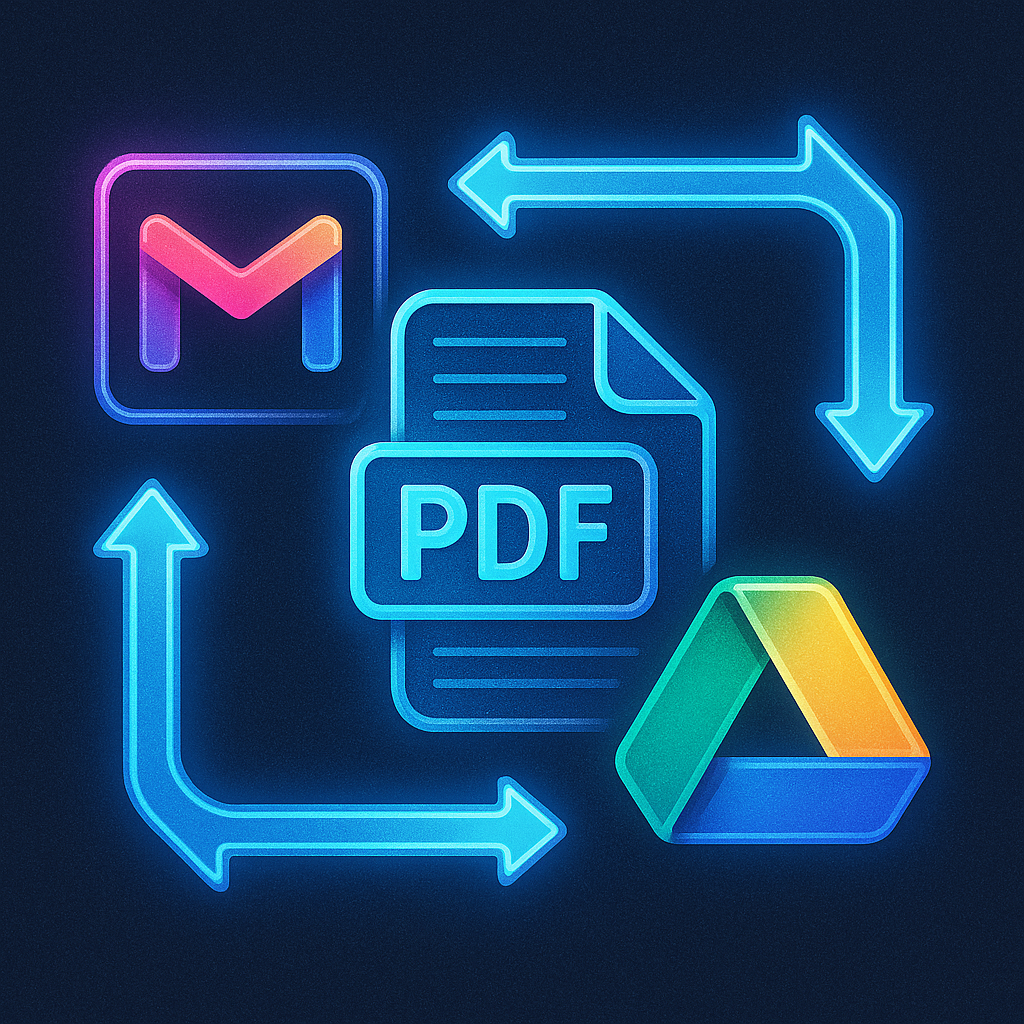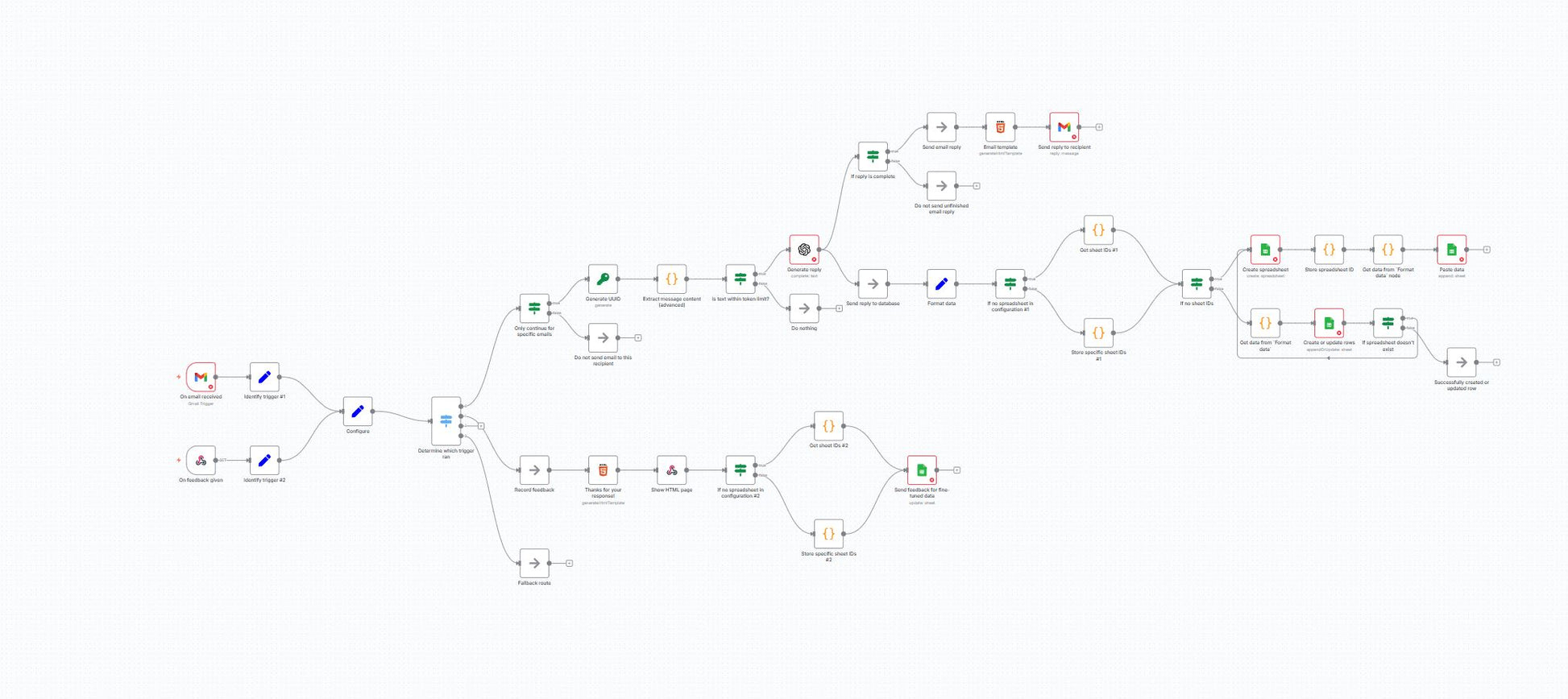AI Gmail Auto-Responder with Google Sheets Feedback Loop
AI Gmail Auto-Responder with Google Sheets Feedback Loop
Couldn't load pickup availability
Turn inbound emails into instant, AI-quality replies — and learn from every interaction. This automation listens for new messages in Gmail, parses the user’s original text, generates a context-aware reply with OpenAI, sends it as a Gmail reply, and logs both the original message and the AI’s response to Google Sheets. A built-in feedback link (“Yes/No”) writes directly back to the same row, creating a continuous improvement loop you can use to fine-tune responses over time.
What it does
-
Triggers on new Gmail messages, with recipient allow-listing.
-
Extracts clean message text (advanced parser), checks token limits, and crafts an AI reply with configurable max/reply token sizes.
-
Replies via Gmail only when the model finishes cleanly (“stop”), preventing half-messages.
-
Creates a Google Sheet automatically if missing, stores IDs in workflow static data, and appends/updates rows with: ID, Initial Message, Generated Reply, and Feedback.
-
Provides a webhook-powered Yes/No feedback page; selections write back to the “Good response?” column for later analysis/fine-tuning.
Why it’s a game-changer
-
Scale without extra headcount: First-response time drops to seconds while your team focuses on exceptions.
-
Quality with control: Guardrails (token checks, finish-reason gating, recipient filters) prevent bad sends.
-
Compounding improvements: Logged Q/A plus binary feedback creates a living dataset for continuous tuning.
-
Data you own: All threads captured in Sheets for reporting, QA, and training sets.
This is a production-ready, done-for-you system that replaces a large chunk of Tier-1 email handling. If a 3-person team saves ~1 hour/day each at $25/hr, that’s ~$1,500/month — payback in just over 3 months, with ongoing gains. The build includes robust parsing, safe-send controls, spreadsheet auto-provisioning, persistent ID management, and a closed-loop feedback mechanism — all of which reduce error risk and operational drag.
Share




